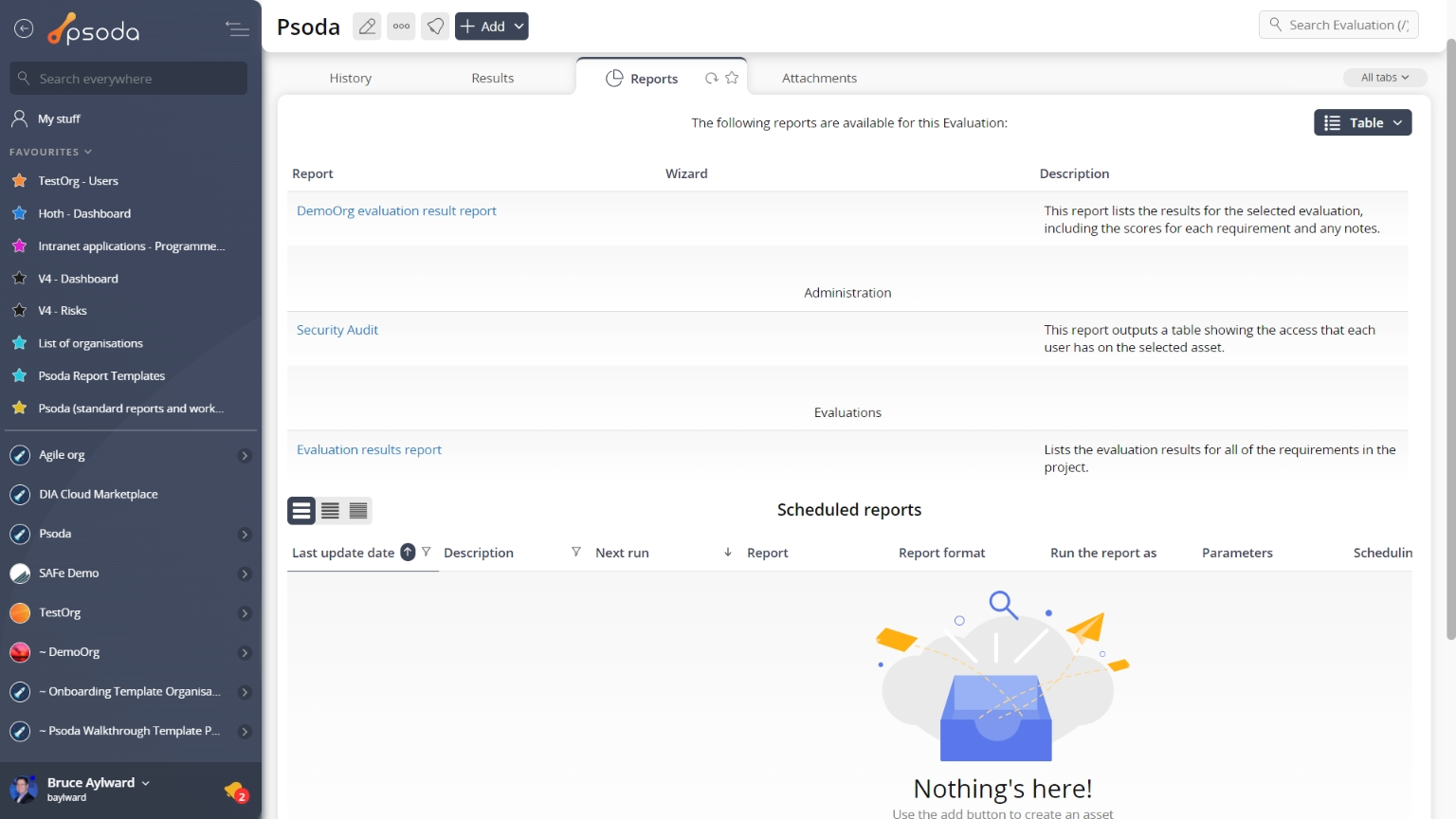This page is shown in Figure 1 and shows all the information relating to the selected  evaluation.
evaluation.

 edit or
edit or  delete this evaluation; or to add a new
delete this evaluation; or to add a new  attachment or
attachment or  comment to this evaluation.
Some details of the evaluation are displayed in subsections just below the top header area, such as the evaluation’s location within Psoda, and it’s description. The rest of the page is made up of a number of tabs or sections (depending on your selected view):
comment to this evaluation.
Some details of the evaluation are displayed in subsections just below the top header area, such as the evaluation’s location within Psoda, and it’s description. The rest of the page is made up of a number of tabs or sections (depending on your selected view):
This tab shows an asset listing of all of the attachments that have been added to this evaluation, as shown in Figure 2. By default, this table will present you with a number of details about the attachments such as the file’s name, attachment type, view the version and access a download link.
From the Actions column of this attachments table, you can act on individual attachments by  editing,
editing,  deleting,
deleting,  moving or
moving or  locking/
locking/ unlocking the selected attachment.
unlocking the selected attachment.

 edit button at the bottom of the attachment table or navigate to this same spot to
edit button at the bottom of the attachment table or navigate to this same spot to  add more attachments to this evaluation. Here, you can also export this attachment list to
add more attachments to this evaluation. Here, you can also export this attachment list to  Excel or
Excel or  CSV files.
At the very bottom of this tabbed view, you have the option to add more attachments by utilising the drag and drop functionality to drag the files you wish to upload into the drop box (note that this function works in HTML5 compliant browsers only).
CSV files.
At the very bottom of this tabbed view, you have the option to add more attachments by utilising the drag and drop functionality to drag the files you wish to upload into the drop box (note that this function works in HTML5 compliant browsers only).
This tab shows an asset listing of all of the comments that  users have made on this evaluation, as shown in Figure 3. By default, this table will present you with a number of details about the comments such as, the date that this comment was last updated, who created the comment, the comment itself and any associated tags to name a few.
From the Actions column of this comments table, you can act on individual comments by
users have made on this evaluation, as shown in Figure 3. By default, this table will present you with a number of details about the comments such as, the date that this comment was last updated, who created the comment, the comment itself and any associated tags to name a few.
From the Actions column of this comments table, you can act on individual comments by  editing or
editing or  deleting the selected comment.
deleting the selected comment.

 edit button at the bottom of the comment table or navigate to this same spot to
edit button at the bottom of the comment table or navigate to this same spot to  add more comments to this evaluation. Here, you can also export this comment list to
add more comments to this evaluation. Here, you can also export this comment list to  Excel or
Excel or  CSV files.
CSV files.
This tab shows shows some basic history of the evaluation, as shown in Figure 4. By default, this tab will present you with a number of details about the evaluation’s history such as the creation date, creation user, last update date and last update user. If the evaluation has been changed then this section will also show a table of all the changes that has been made, including the date of each change, the field changed, the value before the change and the user who made the change.
This tab shows an asset listing of all of the  folders and
folders and  requirements defined for the
requirements defined for the  project or
project or  sub-project and the
sub-project and the  evaluation results against each requirement, as shown in Figure 6.
From the
evaluation results against each requirement, as shown in Figure 6.
From the  actions column menu you can
actions column menu you can  edit the results against a particular requirement.
edit the results against a particular requirement.

 icon next to that folder.
The cells in the table with the darker outline can be edited inline. Just click on the field. If you want to cancel your change press the Escape (Esc) key on your keyboard. To save you change click outside of the cell or press the tab key on your keyboard.
Cells with a bright yellow background indicate where no results has been recorded against a particular requirement yet.
Note that you can customise your change table view by clicking the
icon next to that folder.
The cells in the table with the darker outline can be edited inline. Just click on the field. If you want to cancel your change press the Escape (Esc) key on your keyboard. To save you change click outside of the cell or press the tab key on your keyboard.
Cells with a bright yellow background indicate where no results has been recorded against a particular requirement yet.
Note that you can customise your change table view by clicking the  edit button at the bottom of the change table. Here, you can also export this list of changes to
edit button at the bottom of the change table. Here, you can also export this list of changes to  Excel or
Excel or  CSV files.
CSV files.
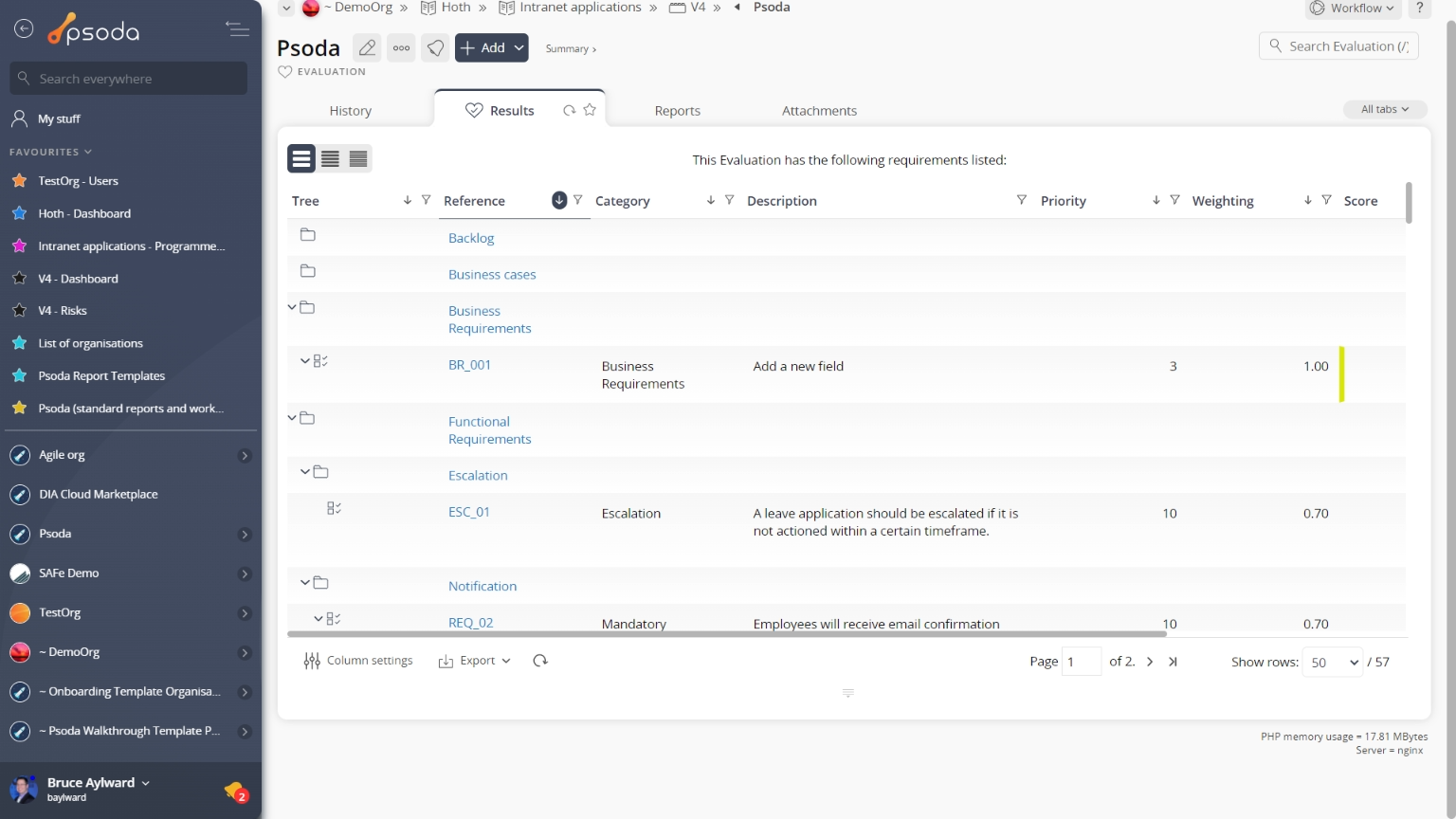
Figure 1 – Evaluation view page
The viewing screen allows you to Attachments
Attachments
This tab shows an asset listing of all of the attachments that have been added to this evaluation, as shown in Figure 2. By default, this table will present you with a number of details about the attachments such as the file’s name, attachment type, view the version and access a download link.
From the Actions column of this attachments table, you can act on individual attachments by 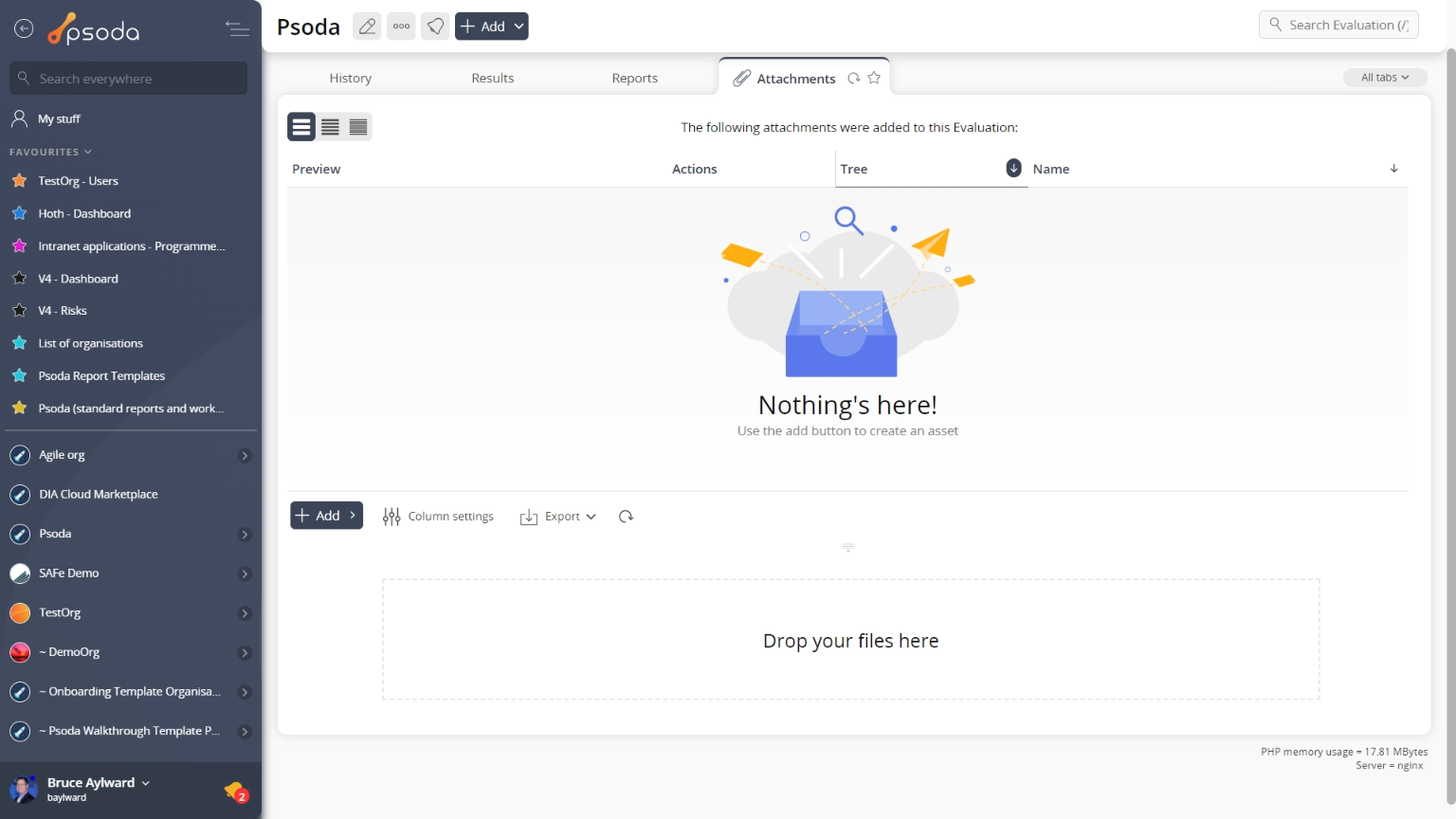
Figure 2 – Evaluation attachments tab
Note that you can customise your table view by clicking the Comments
Comments
This tab shows an asset listing of all of the comments that 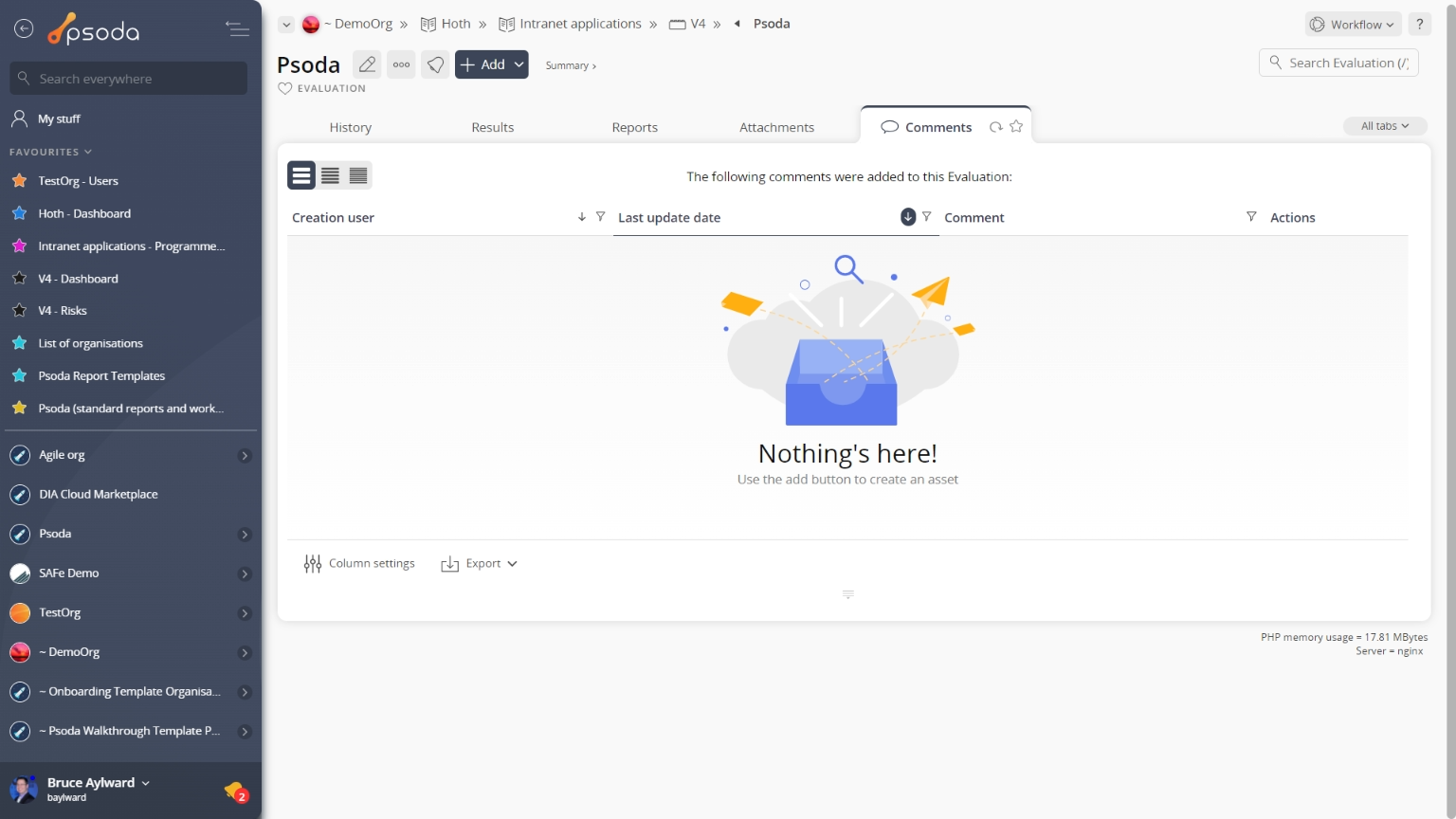
Figure 3 – Evaluation comments tab
Note that you can customise your table view by clicking the History
History
This tab shows shows some basic history of the evaluation, as shown in Figure 4. By default, this tab will present you with a number of details about the evaluation’s history such as the creation date, creation user, last update date and last update user. If the evaluation has been changed then this section will also show a table of all the changes that has been made, including the date of each change, the field changed, the value before the change and the user who made the change.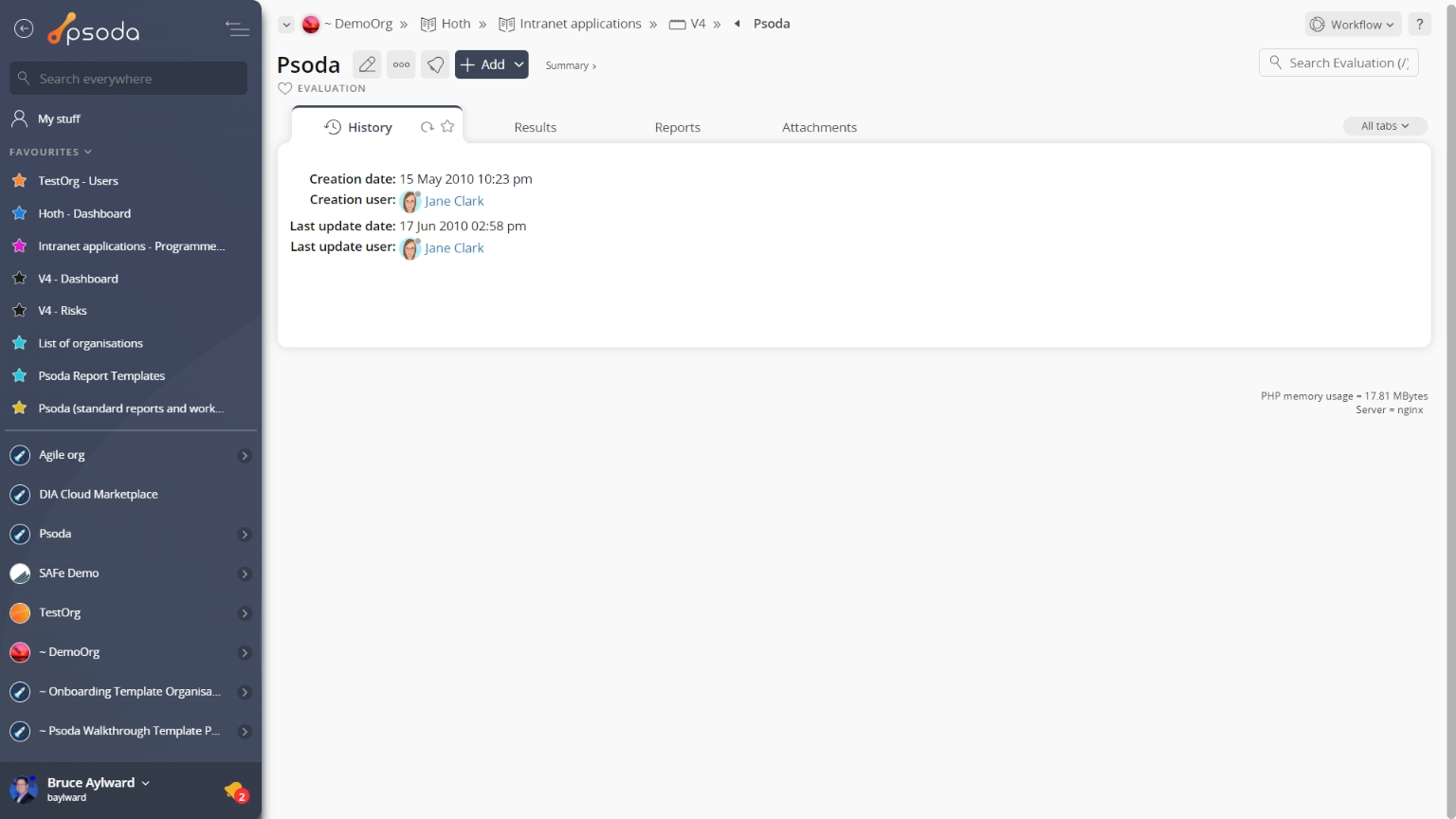
Figure 4 – Evaluation history tab
Note that you can customise your change table view by clicking the edit button at the bottom of the change table. Here, you can also export this list of changes to
Excel or
CSV files.
 Reports
Reports
Figure 5 – Evaluation reports tab
This tab shows a list of reports that you can run for this evaluation, as shown in Figure 5. Results
Results
This tab shows an asset listing of all of the 
Figure 6 – Evaluation results tab
You can open each folder to show the details below that folder by clicking on the